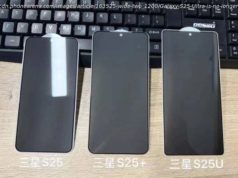Choosing between fiber, cable, DSL, satellite and 5G internet? CNET staff share their personal experiences with internet technology and how each option holds up in our own homes.
Our parents may not have needed good internet service to survive, but we do.
That’s because technology is advancing all around us at a rapid pace — from see-through TVs to bendable phones to, yes, even AI-powered toothbrushes. As our technology advances, so do our internet needs. Most smart tech is Wi-Fi enabled — and the more smart tech you add to your home, the better the internet connection you’ll need.
“Connectivity isn’t just about the internet anymore,” said Adam Auriemma, editor-in-chief of CNET. “New smart technologies mean that our broadband connection can help us monitor our health, energy usage, home security and so much more.”
Locating local internet providers
When searching for the best internet plan to meet your home’s technology demands, how do you know which to choose? How do you sift through all the techy jargon about speed, bandwidth, latency and so on?
The first step is to hear about real-life experiences with each broadband connection option: fiber, cable, satellite, DSL and fixed wireless, aka 5G. We pooled together advice from a group of CNET staffers. Together, we have a combined 45 years of experience testing and reviewing technology and broadband products, interviewing industry experts and talking to consumers about their needs and wants.
Locating local internet providers
Here how we really our current and past experiences with each internet connection type and are our best tips.
As CNET’s resident wireless carrier reporter, I’ve been following this space closely for over a decade. And these past few years, I’ve been particularly focused on the major carriers’ 5G home internet offerings. For all the hype that 5G has so far failed to live up to, home internet has been a bright spot.
Verizon, T-Mobile and AT&T all offer some version of cellular-powered home internet to people around the country, providing competition and potentially a more affordable option. They’ve forced incumbent internet service providers to up their games if they want to keep your business.
I’ve been testing T-Mobile 5G Home Internet since its inception, and I’m using it as I write this while working from home. Its speeds aren’t as fast as cable, fiber or even millimeter-wave-based offerings (which I’ve also tried), but for the most part it’s been, well, fine. Zooming, streaming and browsing have worked largely as they should with any provider, though gaming on an Xbox Series X (particularly with sports games like NBA 2K24) has led to some hiccups, as have some video calls.
I regularly watch YouTube TV; movies and shows from streaming services; and NBA games from NBA League Pass. Even with those more data-demanding tasks, T-Mobile has held its own. In January, my roommate and I used nearly a terabyte of data.
There has been the occasional random drop in service, but again, for the most part it’s been working as it should. Friends who come over and connect to Wi-Fi haven’t noticed that this is 5G-powered, which is the point. This is supposed to work just like any connection, and it largely does.
I do, though, have some reservations a couple of years in.
I wish T-Mobile’s speeds would be a bit more consistent, and as someone who’s used more than a terabyte of data in a month, I’m a bit wary of the company’s new policy that may slow down users if they go over 1.2TB in a given month during times of “congestion.” And since I don’t have T-Mobile as my wireless provider, I’m also keeping a close eye on price increases, which the carrier seems to be experimenting with once again (at least right now, for new users).
But even if I need to switch to a different service in the future, I do appreciate that T-Mobile works in my area of New York City. Hopefully, its presence continues to add pressure to the market, so that even if I do need to make a move, Spectrum or Verizon will give me a better deal.
I’d been covering broadband for a few years before moving into my current home, so I was familiar with fiber internet and excited to find that our home was fiber-ready. Even with my prior knowledge of fiber’s capabilities, I didn’t realize the difference it would make compared with my previous cable connection.
My mesh Wi-Fi router is set to run two speed tests daily, one in the morning and one in the evening. I consistently get over 900Mbps to the home with a plan that advertises max upload and download speeds of 940Mbps.
Actual speeds in the home are lower, of course, but speed tests still land in the 300 to 500Mbps range on my phone, laptop and PS5 over a Wi-Fi connection. That’s more than enough speed to accommodate the many devices connected to our network — 37 according to my router app — with lots of bandwidth available to add more if needed. The only time I’ve noticed a significant drop in speed is when downloading a large file (specifically a video game), but that’s only temporary.
The symmetrical upload speeds are a nice bonus to fiber internet. I take online gaming semi-seriously, so fast upload speeds are a must, and my wife makes use of the connection to upload content to social media. We also work mostly from home, and the fast, consistent upload speeds make for seamless video calls.
The only real drawback is the price, but if you can work it into your household budget, fiber internet is definitely worth the cost. My fiber connection is always on, and it’s always able to handle whatever I need it for. It’s nice not having to think about your internet.
I’ve been covering the broadband industry for six years, and for all of them, I’ve had the same cable internet service through Xfinity. Like most people, my internet connection is something I think about only when something’s going wrong. Thankfully, that’s been pretty rare for me. I can’t remember the last time I saw a buffering wheel on my screen or a Zoom meeting glitch.
I say this as someone who’s constantly writing about cable internet’s flaws — namely, its low upload speeds. But truthfully, I don’t need fast upload speeds. I hardly upload anything — just my side of Zoom meetings, which requires only about 4Mbps.
A cable internet executive once told me the upload speed debate is like the Fast & Furious movies. “Those guys can flip their cars around without missing a beat at 80 mph. That’s like broadband. There’s no reason to go in reverse as fast as you go forward.”
I take that analogy with a grain of salt, but for me, it is true. Xfinity says I’ll get 100Mbps upload speeds with my plan, but a quick speed test shows I’m actually getting 119Mbps as I write this. There are only a few devices in my apartment connected to the internet, and I don’t play online games or stream content, so that’s far more upload speed than I realistically need.
Would I prefer to have fiber internet? Probably. But for me, it wouldn’t be worth the hassle of switching. I never think about my cable internet, and that’s the highest praise I can imagine.






